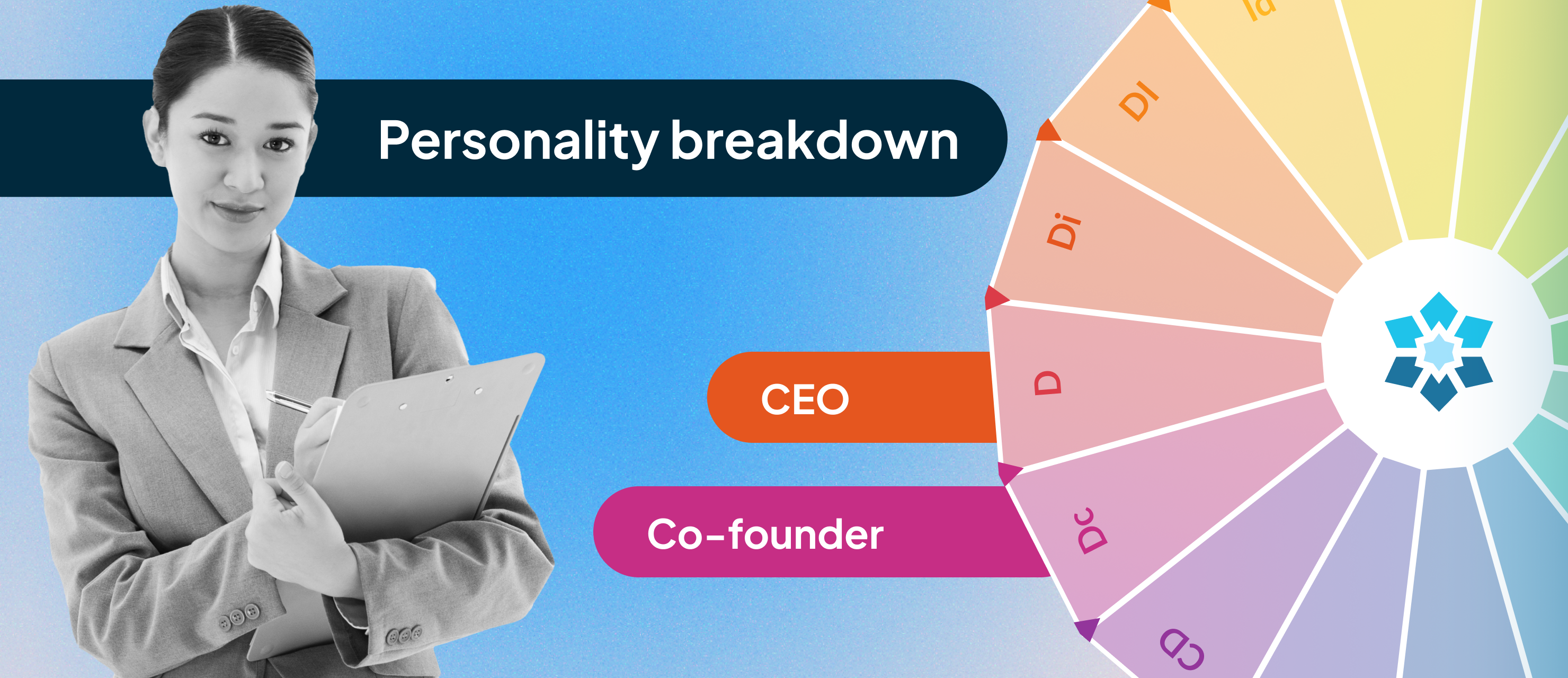
The MEDDIC Sales Methodology emphasizes the importance of a thorough sales qualification process and provides a framework for salespeople to efficiently and accurately assess prospects and leads. By following this methodology’s step-by-step process, sellers can gain a much deeper understanding of the prospect’s buying process.
(M)etrics, (E)conomic Buyer, (D)ecision criteria, (D)ecision process, (I)dentify pain, and (C)hampion
When used in conjunction with personality frameworks such as DISC, salespeople can maximize MEDDIC’s effectiveness with a more complete understanding of their buyer personas. The DISC framework allows sellers to identify the personality type, communication styles, and motivations of the buyer. With this knowledge, sellers can adjust their own communication and opt for a more personalized approach to quickly build trust and win more deals.
Using DISC to identify Metrics
Each buyer will prioritize different quantifiable goals. The seller must identify these metrics in order to best pitch their product in a way that will resonate with the buyer. With an understanding of the buyers’ communication preferences, they can most effectively identify and establish metrics with them.
How to establish metrics across DISC profiles:
|
D types |
I types |
S types |
C types |
|
• Be clear about the end result • Give them a time to ask questions • Order the steps from most important to least • Give them space to work and learn independently |
• Use visual examples to show how to do something • Ask them to complete the quickest, clearest step first • Focus on the ways they can be creative • Project a friendly, positive demeanor |
• Maintain open communication while they’re learning • Project a calm, methodical demeanor • Allow them to work at a steady pace • Show them how other people do it |
• Share all the relevant information • Provide a way to research their own answers as they go • Leave some room for them to figure things out • Tell them how long it will take to learn |
Using DISC to understand the Economic buyer
Because the economic buyer holds the purchasing power, sellers must understand their motivations and priorities. By using DISC, sellers are able to gain valuable insights into the buyer’s thought process, motivating factors, and expectations.
How to understand economic buyers across DISC profiles:
|
D types |
I types |
S types |
C types |
|
Motivated by control over the future, personal authority, and having a competitive edge |
Motivated by innovative, unique, creative ideas and excited by the future |
Motivated by peace, safety, reliability, and others’ wellbeing |
Motivated by logic, information, and problem-solving |
Using DISC to understand Decision criteria
With so many options, it is important for sellers to understand how the prospect makes their decisions. While some buyers may prioritize budget, others may be more interested in the ROI your product offers. Using DISC here can shed light on what sort of things your buyer is more inclined to prioritize and how they might come to such decisions.
Making decisions across DISC profiles:
|
D types |
I types |
S types |
C types |
|
Tend to prefer instant, concrete results and having an advantage over the competition |
Tend to prefer building new relationships and experiences |
Tend to prefer security, reliability and trust |
Tend to prefer accurate information and quality solutions (quality over quantity) |
Using DISC to Identify pain
Sellers must identify their buyer’s pain points to deliver their product’s value in a way that will resonate. Tailoring the pitch to address this pain is crucial to make the sale. Using DISC, sellers can dig deeper into these pain points by asking questions and communicating most effectively with the buyer.
Identifying pain points across DISC profiles:
|
D types |
I types |
S types |
C types |
|
• Communicate clearly and succinctly. • Focus on the competitive advantages your product offers. |
• Communicate in a casual, expressive way. • Refer to previous clients’ similar experiences, needs, and successes. |
• Communicate in a friendly and genuine way. • Focus on building rapport first, and ask them plenty of questions about their concerns. |
• Communicate in a business-like, fact-based way. • Use specific, clear language, have plenty of data, and be prepared to answer their questions. |
Using DISC with Champions
Champions play a vital role in optimizing deals through advocating for the product or service where the seller cannot. Having a strong relationship with the champion is necessary for continued success. By understanding a champions personality through DISC, sellers can facilitate more productive conversations, build trust, and develop a stronger relationship.
Building strong relationships across DISC profiles:
|
D types |
I types |
S types |
C types |
|
• Show respect for the decisions they make. • Directly communicate your thoughts and opinions. • Comfortably engage in discussions, even if there’s a disagreement. |
• Support their bright ideas. • Engage with their stories and share a few of your own. • Spend time with them in a group setting. |
• Spend quality time with them either one-on-one or in small groups. • Encourage them to share their own ideas or thoughts. • Set plans well in advance. |
• Express gratitude for their analytical abilities. • Engage them in a discussion about a topic they love. • Support your opinions with concrete evidence. |
Final Thoughts
The MEDDIC Selling methodology enables sellers to more efficiently qualify potential customers and close more deals. Using DISC methodology, sellers can quickly cut through the noise and more effectively implement the MEDDIC strategy in their outreach.
Every prospect has their own communication style, preferences, and concerns, which means every sales interaction needs to be personalized. You can be prepared by understanding your prospect’s personality and changing your communication to fit their preferred style.
Learn how Crystal can elevate your sales operations








